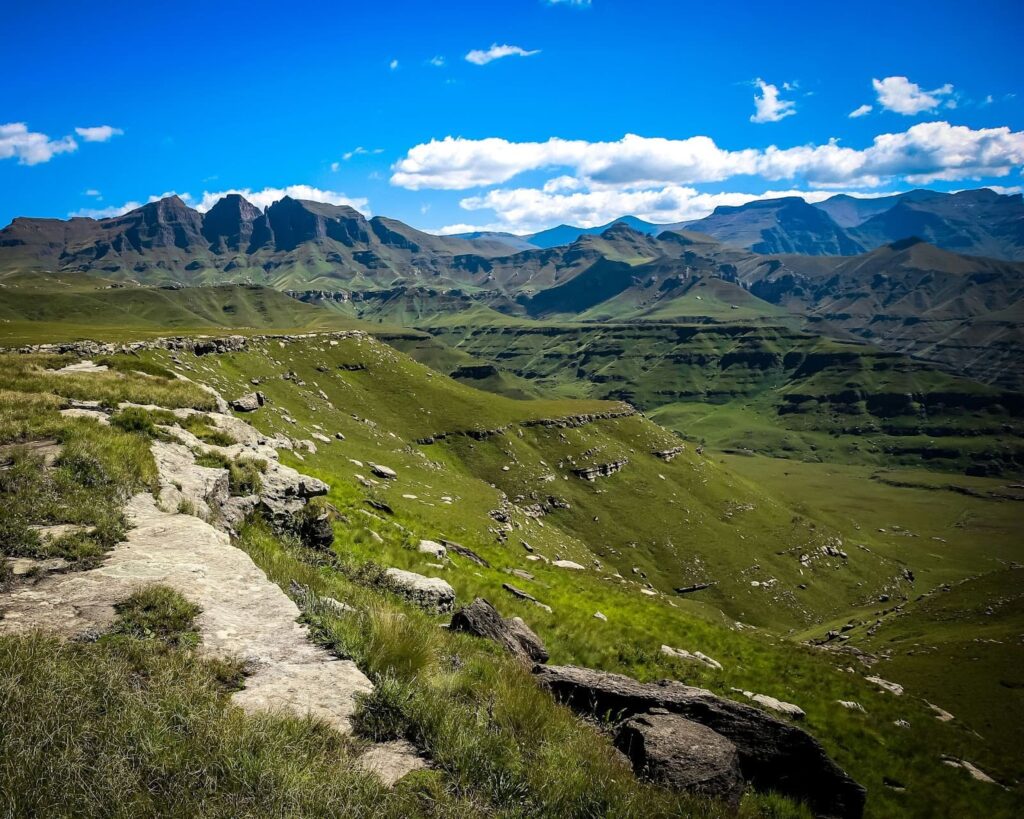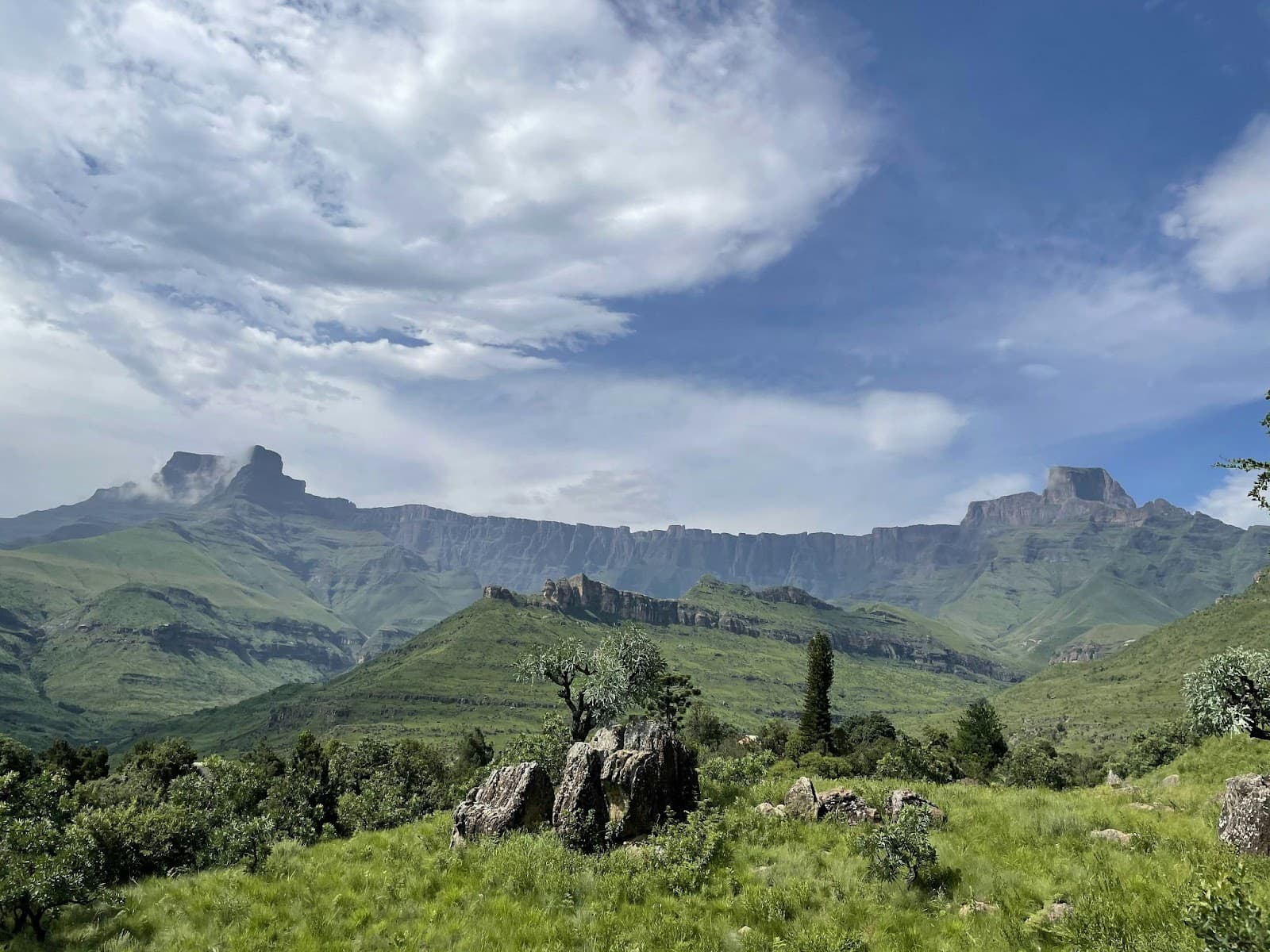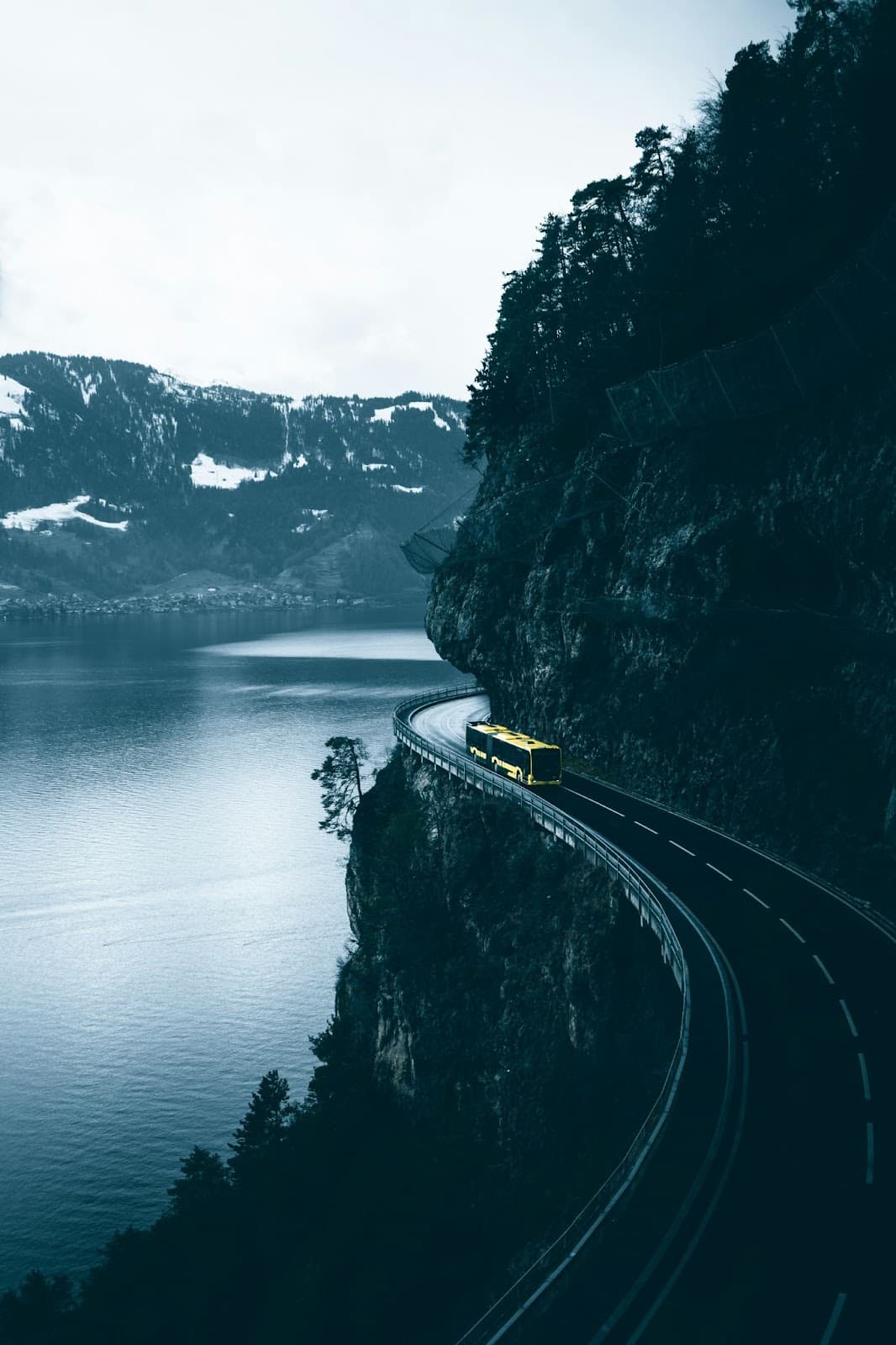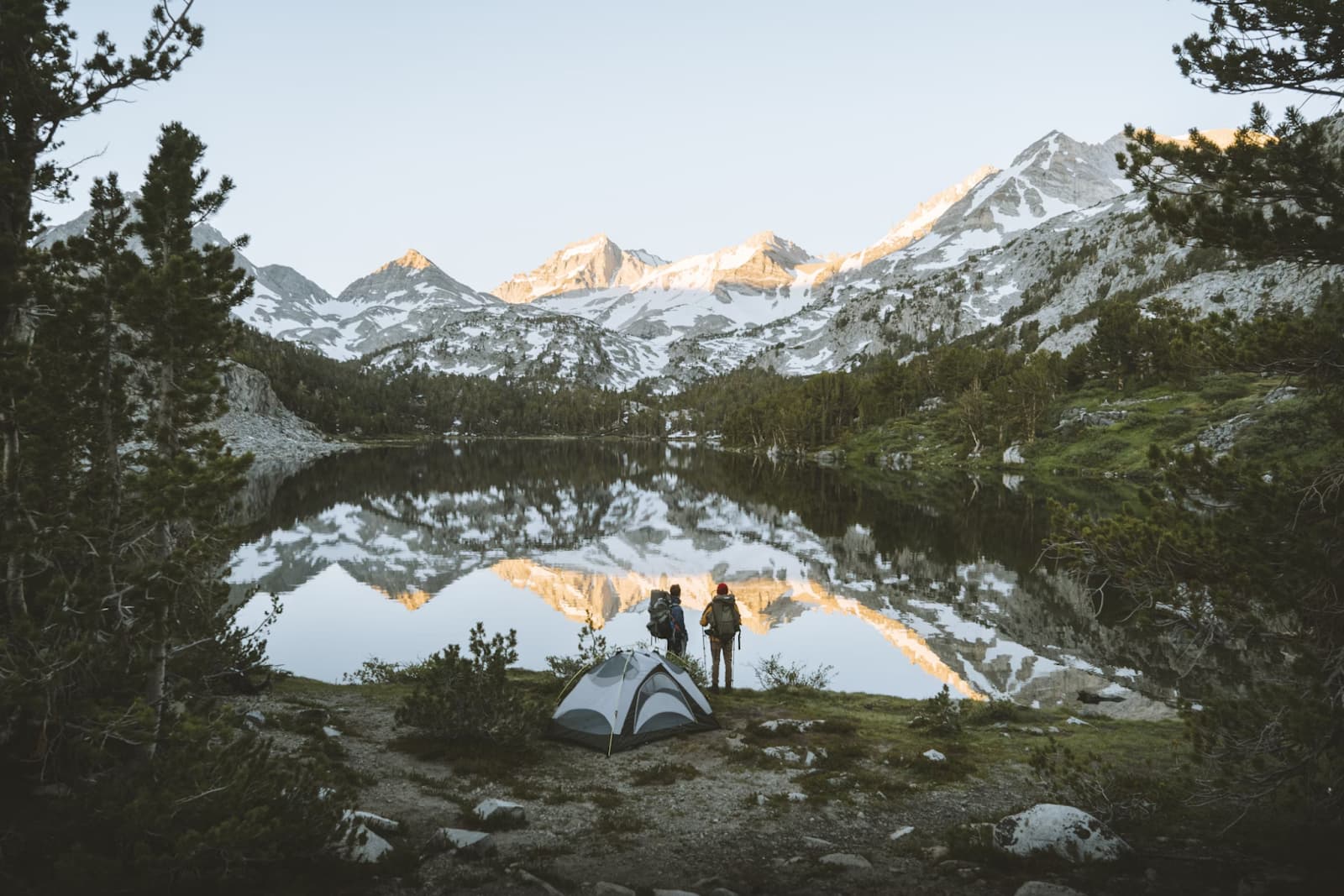Rising like a colossal fortress on the eastern edge of South Africa, the Drakensberg Mountains are more than just a geographical wonder—they’re a living canvas of culture, biodiversity, and ancient mystery. Often referred to as the “Dragon Mountains” (from the Afrikaans Drakensberge), this iconic range forms part of the Great Escarpment, stretching across KwaZulu-Natal, Lesotho, and parts of the Eastern Cape.
But the Drakensberg isn’t just about dramatic cliffs and sweeping vistas. It’s a UNESCO World Heritage Site, a haven for endemic wildlife, and a cradle of prehistoric rock art—blending natural majesty with deep cultural resonance.
Let’s explore what makes the Drakensberg Mountains truly unique and why it’s one of Africa’s most inspiring destinations.
🏞️ The Landscape: A Cathedral of Stone and Sky
The Drakensberg’s scenery is nothing short of epic. Picture jagged basalt peaks, misty valleys, cascading waterfalls, and high-altitude plateaus that feel like they belong on another planet.
Highlights of the Terrain:
- Amphitheatre – A massive rock wall nearly 5 km wide and 1,200 m high, one of the most iconic natural features in Africa.
- Tugela Falls – One of the world’s tallest waterfalls, tumbling nearly 950 meters down the face of the Amphitheatre.
- Cathedral Peak & Champagne Castle – Popular hiking and climbing destinations with panoramic views.
- Sani Pass – A winding 4×4 mountain route connecting South Africa and Lesotho, offering dramatic switchbacks and a view of the clouds below.
🧭 Every turn of the trail unveils something new—be it a hidden cave, a golden grassland, or a sudden troop of baboons watching from a cliff edge.
🖐️ A Place of People: History Etched in Stone
Long before modern hikers and travelers arrived, the San people (Bushmen) called these mountains home. Their legacy is preserved in thousands of rock art sites, some over 2,000 years old, tucked away in caves and cliffs throughout the range.
Rock Art & Human Heritage:
- Over 35,000 individual paintings have been recorded, depicting hunters, animals, dances, and spiritual visions.
- Sites like Game Pass Shelter are considered “Rosetta Stones” of San spiritual life.
- These paintings are still culturally significant, offering insight into the San worldview and their connection to the land.
🎨 Walking through the Drakensberg is like stepping into a living museum, where every stone might carry the fingerprint of ancient hands.
🐾 Biodiversity in the Clouds
The Drakensberg is a biodiversity hotspot, home to rare alpine flora, endemic bird species, and elusive mammals. Its unique combination of altitude and climate makes it one of South Africa’s most important ecological regions.
Notable Wildlife:
- Bearded vultures (lammergeiers) soar over the cliffs.
- Eland, South Africa’s largest antelope, graze on highland meadows.
- Mountain reedbuck and caracal can be spotted with patience and luck.
- Over 300 bird species, many endemic to the region.
🌼 The flora is equally rich—alpine wildflowers in spring, towering tree ferns, and ancient cycads offer an ever-changing palette through the seasons.

🚶 Adventure in Every Direction
For outdoor lovers, the Drakensberg offers year-round adventure, from high-altitude hiking to quiet moments of solitude by a stream.
Activities to Explore:
- Hiking – Trails range from family-friendly walks to multi-day treks like the Mnweni Circuit.
- Rock Climbing & Abseiling – Popular at areas like Cathedral Peak and Sentinel Peak.
- Birdwatching – The cliffs and wetlands attract avid birders from around the world.
- Horseback Riding – Traditional Basotho ponies are used to navigate rugged terrain.
- Snow Sports (in winter) – Lesotho’s nearby highlands sometimes offer ski opportunities.
🏕️ Many travelers base themselves at eco-lodges, mountain camps, or even rustic cave shelters under the stars.
🛖 Culture, Myth & Modern Life
Beyond its natural wonders, the Drakensberg is infused with Zulu and Basotho cultural traditions. Local villages offer a glimpse into age-old customs, music, storytelling, and crafts.
Cultural Touchpoints:
- Sani Top Chalet – The highest pub in Africa, sitting at the top of Sani Pass in Lesotho.
- Zulu beadwork and dance in local communities.
- Basotho blankets and storytelling traditions in Lesotho.
🗣️ The mountains are also steeped in legend—stories of ancestral spirits, hidden treasure, and dragons said to roam the misty cliffs.
🧳 Travel Tips: Visiting the Drakensberg
- Best Time to Visit: Spring and autumn (September to November, and March to May) offer the best weather.
- How to Get There: Fly into Durban or Johannesburg, then drive to the Northern or Central Drakensberg regions.
- Where to Stay: Options range from luxury eco-lodges to budget backpackers and community-run guesthouses.
- Permits: Required for overnight hikes in protected areas like uKhahlamba-Drakensberg Park.
🌐 The region is vast—split into Northern, Central, and Southern sections—each with its own unique trails and character.
The Drakensberg Mountains aren’t just a destination—they’re an experience that touches every sense. From the echoes of ancient art in sandstone caves, to the sight of clouds rolling over sharp peaks, to the warmth of local hospitality, it’s a place where nature and culture blend seamlessly.
If you’re seeking a journey that’s wild, grounding, and unforgettable—the Drakensberg awaits.
🗻 Come for the views. Stay for the stories. Leave with a deeper breath.


